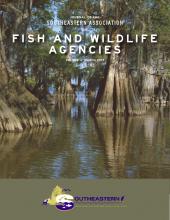Lead Shot Concentrations in and Adjacent to Fields Managed for Mourning Doves and Effects of Tillage on Shot Concentrations in Tangipahoa Parish, Louisiana
Concentrating hunters on dove fields could place mourning doves (Zenaida macroura) and other ground foraging birds at risk of lead poisoning. We collected soil samples during three time periods (pre-soil disturbance [i.e., disking], post-soil disturbance [disking, roller harrow, planting], and post-hunting / field preparation [i.e., mowing, raking, burning]) to determine if soil disturbance reduced the amount of lead shot potentially available to ground foraging birds in managed dove fields. We also collected soil samples in the woods adjacent to these fields. Disking and site preparation...
